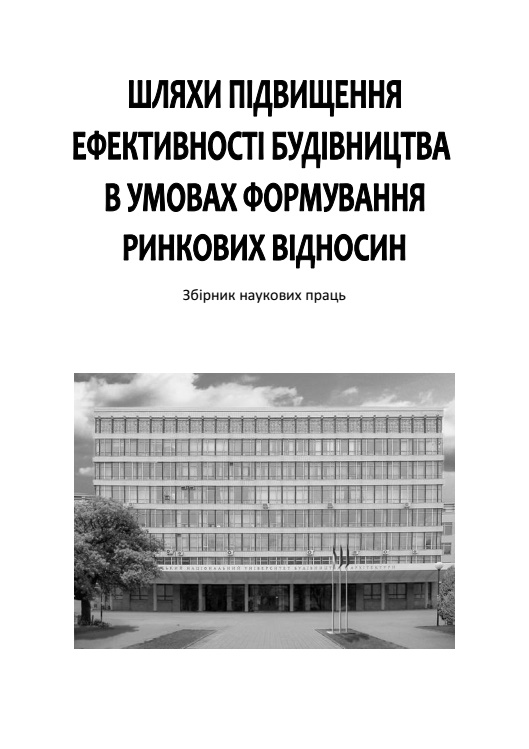Personnel innovations as a factor in increasing the competitiveness of the enterprise
DOI:
https://doi.org/10.32347/2707-501x.2021.47(2).25-32Keywords:
enterprise development, management, human resources, innovative enterprises, competitiveness, staff, level of knowledgeAbstract
The article substantiates the provisions and practical recommendations for assessing the innovation of staff, human resource management systems in enterprises. The peculiarities of innovative staff development are determined and the degree of influence of human resources innovation on staff competitiveness is assessed. It is substantiated that competitiveness is one of the most important categories of market economy. Significant for the competitiveness of the enterprise together with technologies and methods of production organization are the availability of professional staff, level of motivation, working conditions and various factors that ensure the level of employee competitiveness. The necessity of personnel development as a factor in increasing the efficiency of the enterprise is substantiated. An analysis of existing approaches to determining the competitiveness of staff. The influence of modern global trends is noted. With the need for the transition of Ukraine's economy to a post-industrial model of development, its digitization and robotization, there is a need for new approaches to the formation of knowledge, skills, competencies of personnel. In particular, in the use of the competency approach, which is directly related to changes in the nature and content of work, as well as changes in education and training. Conditions must be created for the integration of education and training in accordance with the needs of the labor market, as well as for ensuring the mobility of staff in several dimensions: vertical (career development), horizontal (industry change) and spatial (territorial relocation). The main advantages of the competency approach are integration potential and flexibility. The key characteristics and features of human resources management as a factor in supporting the growth of innovative development of the enterprise are summarized.
References
Афонін А.С., Білоусова С.В., Мільскі К. Конкурентоспроможність суб’єктів господарювання: теоретичні аспекти і висновки для індустрії туризму. Бізнес-навігатор. 2008. № 3 (15). С. 172–183.
Адамик В.В., Вербицька Г.А. Оцінка конкурентоспроможності підприємства. Вісник Тернопільського національного економічного університету. 2008. № 1. С. 69–78.
Адлер О.О. Застосування системного підходу під час прийняття управлінських рішень щодо підвищення рівня конкурентоспроможності підприємства. Збірник наукових праць ВНАУ. Серія: Економічні науки. 2012. № 1 (56). С. 84–88.
Шумпетер Й. Теория экономического развития. 1982. 455 с.
Фатхутдинов Р.А. Конкурентоспособность: экономика, стратегия, управление. 2000. 312 с.
Санто Б. Инновация как средство экономического развития. 1990. 295 с.
Березіна Л.М. Інноваційна політика підприємств: тактичні та стратегічні аспекти. Маркетинг і менеджмент інновацій. 2013. № 4. 132 с.
Сітковська А.О. Інноваційна спрямованість підвищення конкурентоспроможності аграрних підприємств. Інноваційна економіка. 2016. № 3–4 (62). С. 57–60.
Колесов С.В. Інноваційні аспекти конкурентоспроможності промислових підприємств України. Київ, 2010. 335 с.
Семикіна М.В. Мотивація конкурентоспроможності праці: теорія і практика регулювання / М.В. Семикіна . – Кіровоград: ПіК, 2003. – 426с.
Смірнов О.О. Діагностика конкурентоспроможності персоналу в системі управління інноваційною діяльністю підприємства//Управління інноваційним процесом в Україні: проблеми, перспективи, ризики: Збірник наук. пр. – Видавництво нац. Ун-ту «Львівська політехніка», 2007. – С.566-572
Downloads
Published
How to Cite
Issue
Section
License

This work is licensed under a Creative Commons Attribution 4.0 International License.
Authors who publish with this journal agree to the following terms:
- Authors retain copyright and grant the journal right of first publication with the work simultaneously licensed under a Creative Commons Attribution License that allows others to share the work with an acknowledgement of the work's authorship and initial publication in this journal.
- Authors are able to enter into separate, additional contractual arrangements for the non-exclusive distribution of the journal's published version of the work (e.g., post it to an institutional repository or publish it in a book), with an acknowledgement of its initial publication in this journal.
- Authors are permitted and encouraged to post their work online (e.g., in institutional repositories or on their website) prior to and during the submission process, as it can lead to productive exchanges, as well as earlier and greater citation of published work (See The Effect of Open Access).

